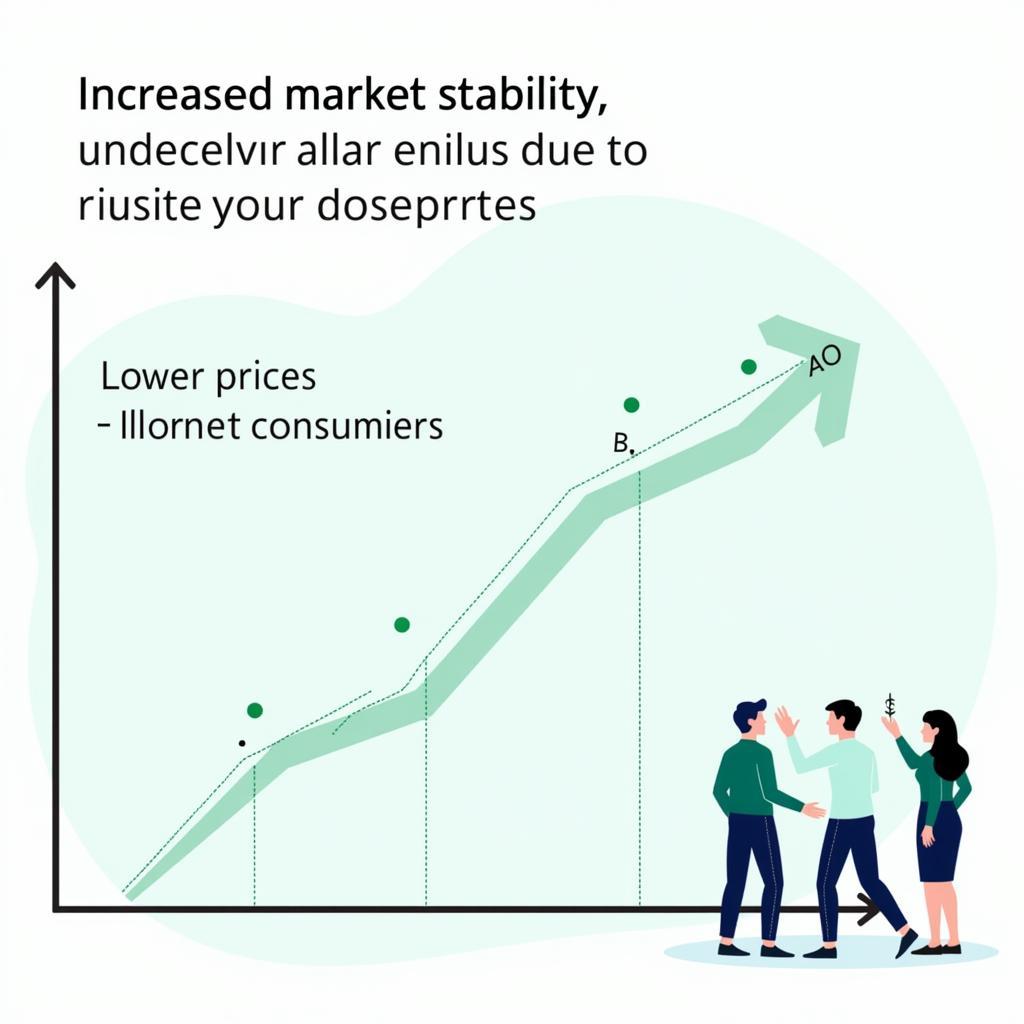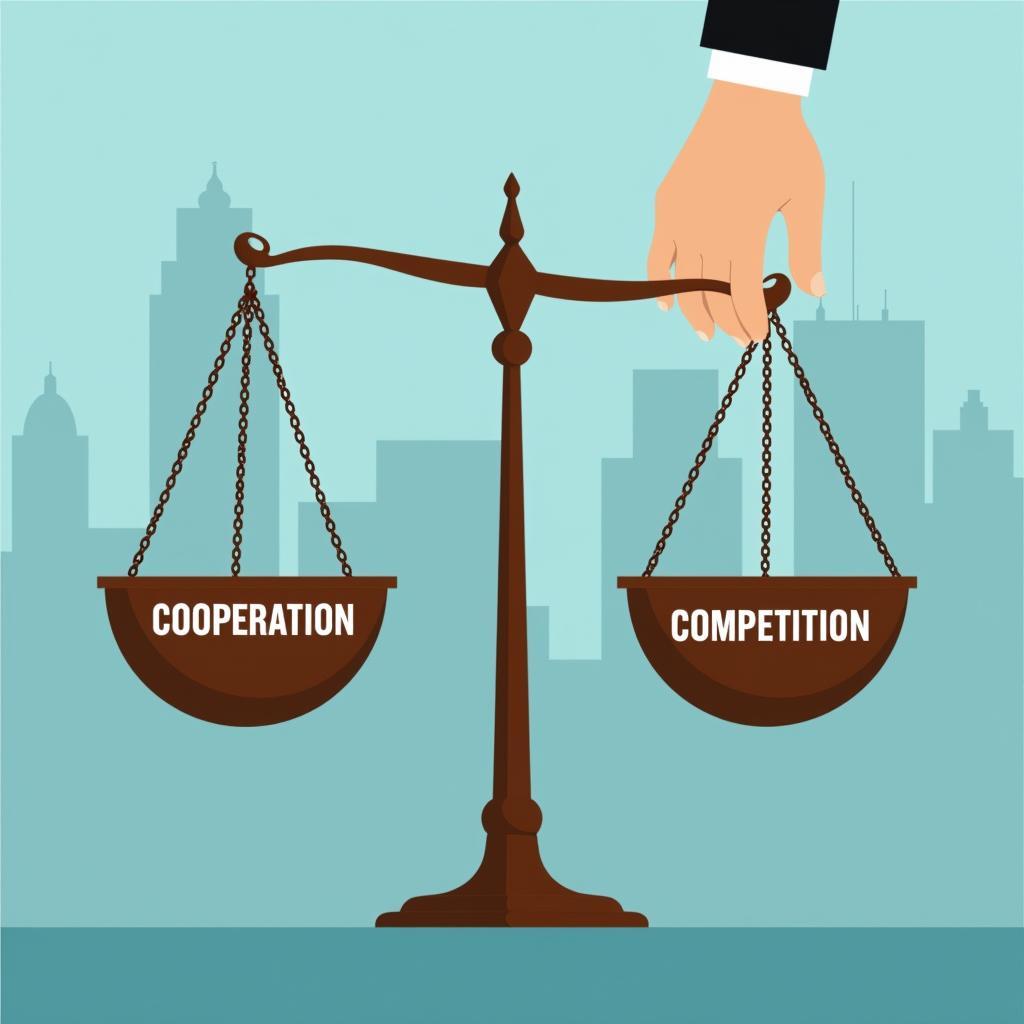From society’s standpoint, cooperation among oligopolists is often viewed with suspicion, and for good reason. While businesses in an oligopoly can cooperate to bring stability to a market and potentially even benefit consumers, the potential for collusion and anti-competitive behavior raises significant concerns about fairness, innovation, and consumer welfare. This article delves into the complex relationship between oligopolistic cooperation, its societal impact, and the regulatory challenges it presents.
The Double-Edged Sword of Oligopolistic Cooperation
Cooperation among a small number of dominant firms in a market (an oligopoly) can have both positive and negative consequences for society. On one hand, cooperation can lead to greater market stability, predictable pricing, and even economies of scale that can lower costs for consumers. Imagine a scenario where a few telecommunication companies agree on standardized technology, making it easier for consumers to switch providers and fostering competition in service quality rather than technical specifications.
However, the very nature of oligopoly creates a strong incentive for these companies to collude. Instead of competing on price or innovation, they might secretly agree to fix prices, divide markets, or limit output. This behavior, known as anti-competitive practice, can harm consumers through higher prices, reduced choice, and stifled innovation. From society’s standpoint cooperation among oligopolists is a delicate balance between potential benefits and inherent risks.
 Benefits of Oligopoly Cooperation
Benefits of Oligopoly Cooperation
Why is Society Concerned When Oligopolists Cooperate?
The primary concern stemming from oligopolistic cooperation is the potential for abuse of market power. When a few firms control a significant portion of a market, they have the ability to influence prices and output levels in ways that benefit themselves at the expense of consumers. This can lead to a number of detrimental outcomes:
- Higher Prices: When firms collude, they can artificially inflate prices above competitive levels, transferring wealth from consumers to the pockets of the oligopolists.
- Reduced Choice: Collusion can limit the variety of products and services available to consumers, as firms may agree to divide markets or restrict the entry of new competitors.
- Stifled Innovation: With less competition, there’s less incentive for firms to invest in research and development, leading to slower technological progress and fewer innovative products and services.
- Reduced Economic Efficiency: When resources are not allocated efficiently due to market manipulation, it can lead to a decline in overall economic productivity and growth.
 Risks of Oligopoly Collusion
Risks of Oligopoly Collusion
How Can Society Benefit from Oligopolistic Cooperation?
While the risks are significant, it’s important to acknowledge that cooperation among oligopolists can, under certain circumstances, benefit society. For instance, joint ventures in research and development can accelerate technological advancements in industries with high upfront costs, such as pharmaceuticals or renewable energy. Cooperation can also lead to the development of industry standards that benefit consumers through increased interoperability and reduced switching costs.
Dr. Anya Sharma, an economist specializing in industrial organization, observes, “The key lies in differentiating between cooperation that enhances efficiency and cooperation that restricts competition. Regulators need to focus on fostering the former while vigilantly guarding against the latter.”
The Role of Regulation in Balancing Cooperation and Competition
Given the inherent tension between cooperation and competition in oligopolistic markets, effective regulation is crucial. Antitrust laws and competition policies aim to prevent anti-competitive behavior while still allowing for legitimate forms of cooperation. These policies often involve:
- Monitoring market concentration: Regulators track market share and mergers to prevent excessive concentration of power.
- Investigating potential collusion: Authorities investigate suspected price-fixing, market division, and other anti-competitive practices.
- Imposing penalties for violations: Fines and other sanctions can deter firms from engaging in illegal behavior.
- Promoting transparency: Regulations that require greater transparency in pricing and business practices can make it more difficult for firms to collude.
 Regulation of Oligopolies
Regulation of Oligopolies
Conclusion
From society’s standpoint, cooperation among oligopolists is a complex issue with the potential for both benefits and harms. While cooperation can lead to greater market stability and efficiency, it also carries the risk of collusion and anti-competitive behavior. Effective regulation is essential to ensure that cooperation serves the interests of society rather than the narrow interests of a few powerful firms. Striking the right balance between fostering innovation and protecting consumers is a continuous challenge that requires vigilance and adaptation in the face of evolving market dynamics.
FAQ
- What is an oligopoly?
- What are the potential benefits of cooperation among oligopolists?
- What are the risks of collusion in oligopolistic markets?
- How do antitrust laws address oligopolistic cooperation?
- What role does transparency play in regulating oligopolies?
- Can cooperation among oligopolists ever be beneficial for consumers?
- How can regulators differentiate between beneficial and harmful cooperation?
For further assistance, please contact us at Phone Number: 02043854663, Email: [email protected] or visit us at Zone 34, Bac Giang, 260000, Vietnam. We have a 24/7 customer service team.